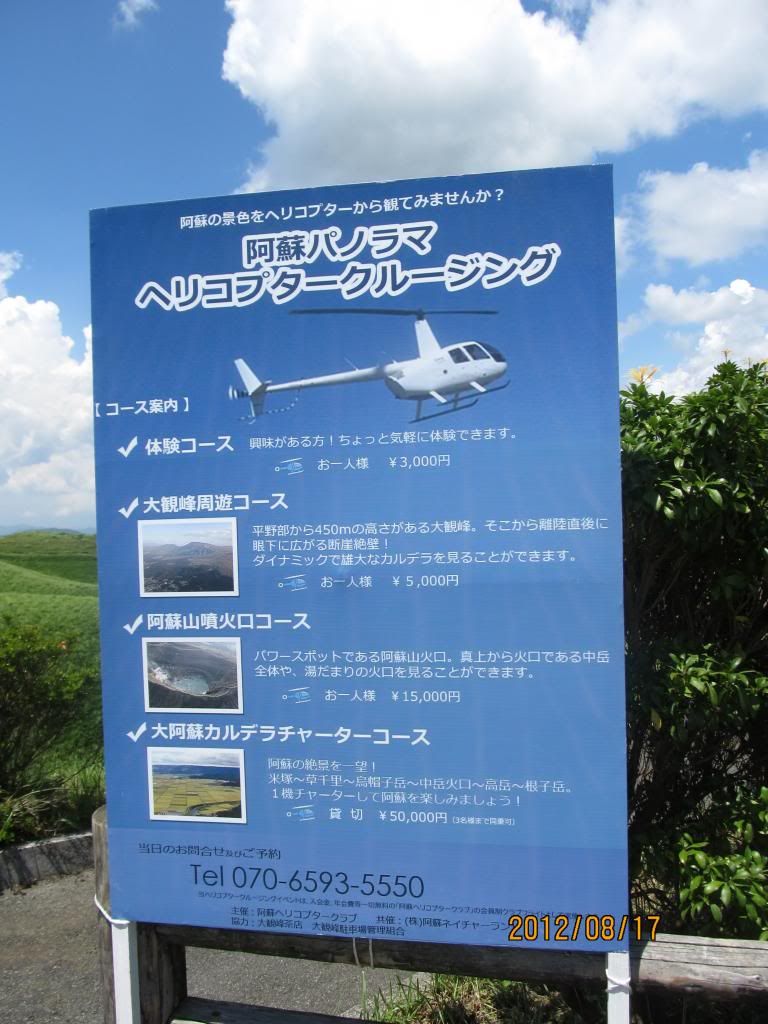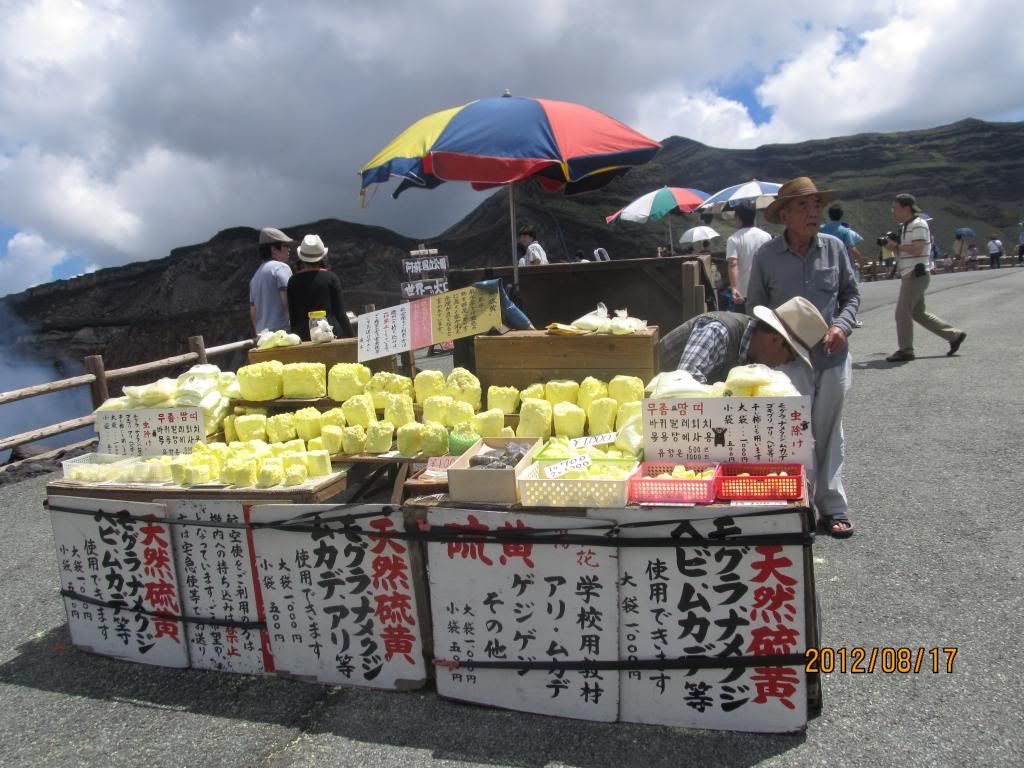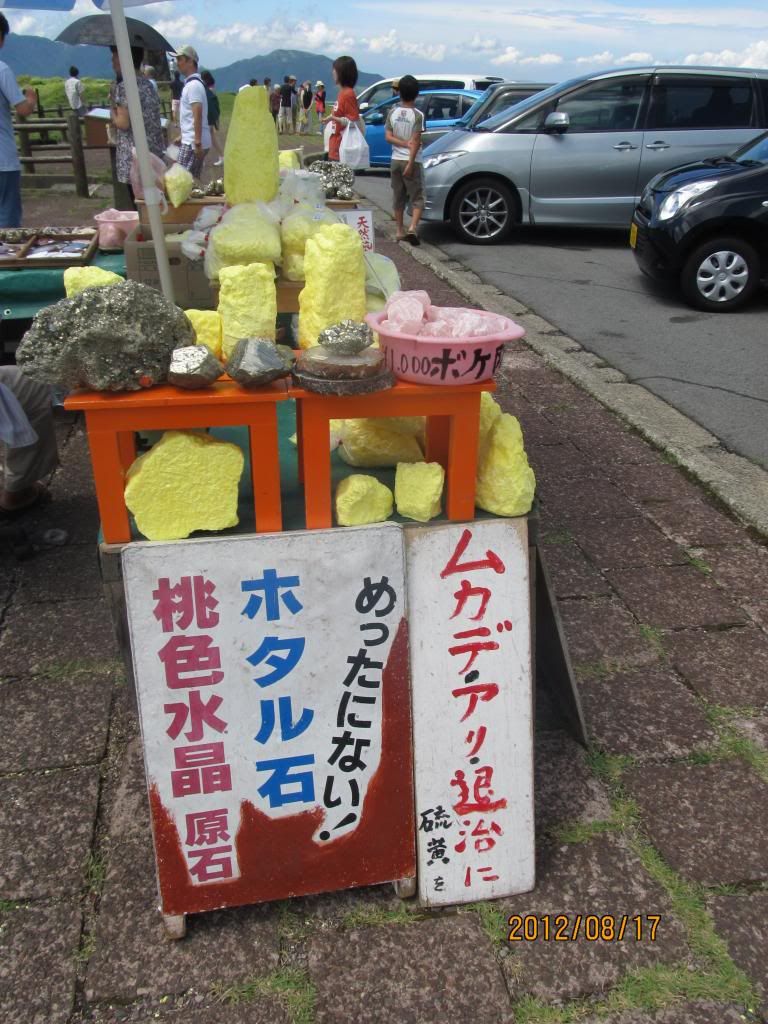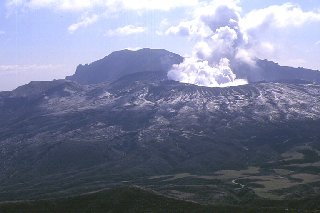
of KUMAMOTO
 |
<Ancient Times>
A Treasury of Ancient Culture
With its moderate temperature, abundant water supply and endless hills,Kumamoto has been a site for human settlement for about twenty eight thousand years. Throughout Kumamoto, we can find relics of the old Stone Age and Jomon Period. Rice cultivation began earlier in the Yayoi Period compared to other areas, while bronze and iron implements were also found in parts that show certain similarity to those in Mainland China. At Tensui-machi in Tamana-gun, the oldest iron axe ever found in Japan was excavated, and Yayoi culture flourished in that age appeared in the area.In the Burial Mound Age, the Burial Mound, square at the head and rounded at the foot, were first built at the base of Uto Peninsula over a period of four centuries. Burial Mounds of this kind were constructed all around Kumamoto. Around that time, lived prosperous and powerful people called The Hinokimi. Relics from the latter part of the age of burial mounds (in the sixth and the seventh centuries),appear to indicate that the powerful had interchange with China, as evidenced at the Eda-Funayama burial mound located in Tensui-machi. Decorated burial mounds with pictures and patterns drawn inside the grave got so popular that such unique local practices as standing statues of people and artifacts both made from stone are found on the mound. After Iwai, Kuninomiyatsuko(the local governor) of Tsukushi-province, rebelled in 527, Miyake, an area under direct imperial control, was subsequently established to become part of the national political system. During the Ritsuryo(Ancient Ordinance)period, Kumamoto was the only major state in Kyushu. Around that time, Kukuchi Castle(in Kikuka-machi and Kikuchi-city) was constructed. You will find the natural features of Kumamoto sung in "Man-yoshu" Lyrics(Collection of Myriad Leaves) in the eighth century.
|
|
|
|
<Middle Ages>
Warriors Making Names for Themselves Over the Country
During the Heian period, Fourteen counties and ninety-nine villages were founded in the province of Higo. In the golden age of Shoen(private tracts of land), about ten including Aso-sho, Kanokogi-sho, and Yamaga-sho were founded, and the warrier groups of the larger Shoen started to accumulate power. Then came the era of warriors. During the Kamakura period, warriors were appointed as head of the estates, and such clans as the Asos, the Kikuchis, and the Shodais exercised their local power. Sagara, a former Shogunate vassal from Kamakura, entered Kuma district(in southern Kumamoto) and left traces of original Buddhist culture. In the Nambokucho era (during which the imperial throne was divided into the northern and the southern courts), reflecting the state of the nation, Kyushu split into two groups who clashed with each other. Kikuchi extended his sphere of influence, then Aso, Nawa, and Sagara also wielded power. However, when Kikuchi lost its grip on power in the final stages of the Muromachi period, Otomo in Bungo(Oita), Ryuzoji in Hizen (Saga & Nagasaki), and Shimazu in Satsuma(Kagoshima) began to extend their sphere of influence, and the province of Higo was plundered by these big three daimyos, or feudal lords, during the Sengoku(Civil War) era. Thereafter, Shimazu took control of Higo until Hideyoshi Toyotomi's conquest of Kyushu.
|
|
|
|
<Early Modern Ages>
The Era of Mature Culture
When Hideyoshi Toyotomi conquered Kyushu in 1587, he appointed Narimasa Sasa as head of the province. However, after Sasa fell from power following local uprising, Kiyomasa Kato ruled the northern part of the prefecture, while Yukinaga Konishi held authority in the south, and Sagara had kept the position in Kuma. After the fall of Konishi in 1600, in the battle of Sekigahara, Kiyomasa Kato, builder of Kumamoto Castle, unified Higo. He achieved much for the region, including works of civil engineering and flood prevention. Kato was followed by Hosokawa who entered Higo in 1632, and who ruled 540 thousand "koku" of Higo until the Meiji Restoration. Hosokawa devoted his energies to encouraging culture, such as Higo-Koryu, the Higo style tea ceremony, the Noh drum culture of Kita-Ryu,and Kinshun-Ryu,the Higo-Rokka,or six flowers, which must never be taken out of the house, the house of Tsukasa Yoshida in Sumo, and Higo-zogan, or damascening. The great swordsman Musashi Miyamoto came to Higo on the invitation of the third ruler, Tadatoshi Hosokawa, and spent his final days in years in Kumamoto writing Grin-no sho(The Book of Five Elements). Amakusa is located near Nagasaki, and Christianity made great inroads here because Konishi was a Christian daimyo. In Amakusa, Collegio (Amakusa School) was established, and elements of Kirishitan(of western-style brought with Christianity) culture such as Latin and astronomy flourished. However, Christianity was officially outlawed in 1613. In 1637, as the oppression to Christianity became increasingly severe, thirty thousand farmers suffering under the brutal tax system staged an uprising. This bacame known as the Amakusa and Shimabara rebellions. The year after the rebellion, Japan adopted its isolationist policy. The rebellion was the key factor in its adoption. After the rebellion, Amakusa came to be a Shogunate demesne until the Meiji Restoration.
|
|
|
|
<Recent Times>
Building a Modern Nation
In 1869, the Shogunate returned the land and people to the Emperor. In 1871, the old domains were replaced by prefectures. Kumamoto domain became Kumamoto Prefecture, Hitoyoshi domain became Hitoyoshi Prefecture, and Amakusa was temporarily incorporated into Nagasaki Prefecture. In 1876, the present Kumamoto Prefecture was founded. Kumamoto Prefecture laid plans to modernize based on Western culture. In 1871, Kumamoto Medical School and Kumamoto School of Western Studies were founded. However, the samurai class became increasingly disgruntled with the new government, and in 1876, the Shinpuren rebellion ignited. In 1877, the Seinan Civil War began, with Kumamoto the main battlefield. The teacher's lodgings in Kumamoto School of Western Studies was where Tsunetami Sano was permitted to found Hakuaisha during the Seinan Civil War, and was also the birth place of the Japan Red Cross Society. In 1887, the No. 5 High School was founded. Soseki Natsume and Yagumo Koizumi ware teaching there, and the school produced many talented people who went out into the world.
|
|
|
































































 Performers dressed as lions danced on the streets of Chinatown in Yokohama on Sunday to celebrate the Lunar New Year.
Performers dressed as lions danced on the streets of Chinatown in Yokohama on Sunday to celebrate the Lunar New Year.
















